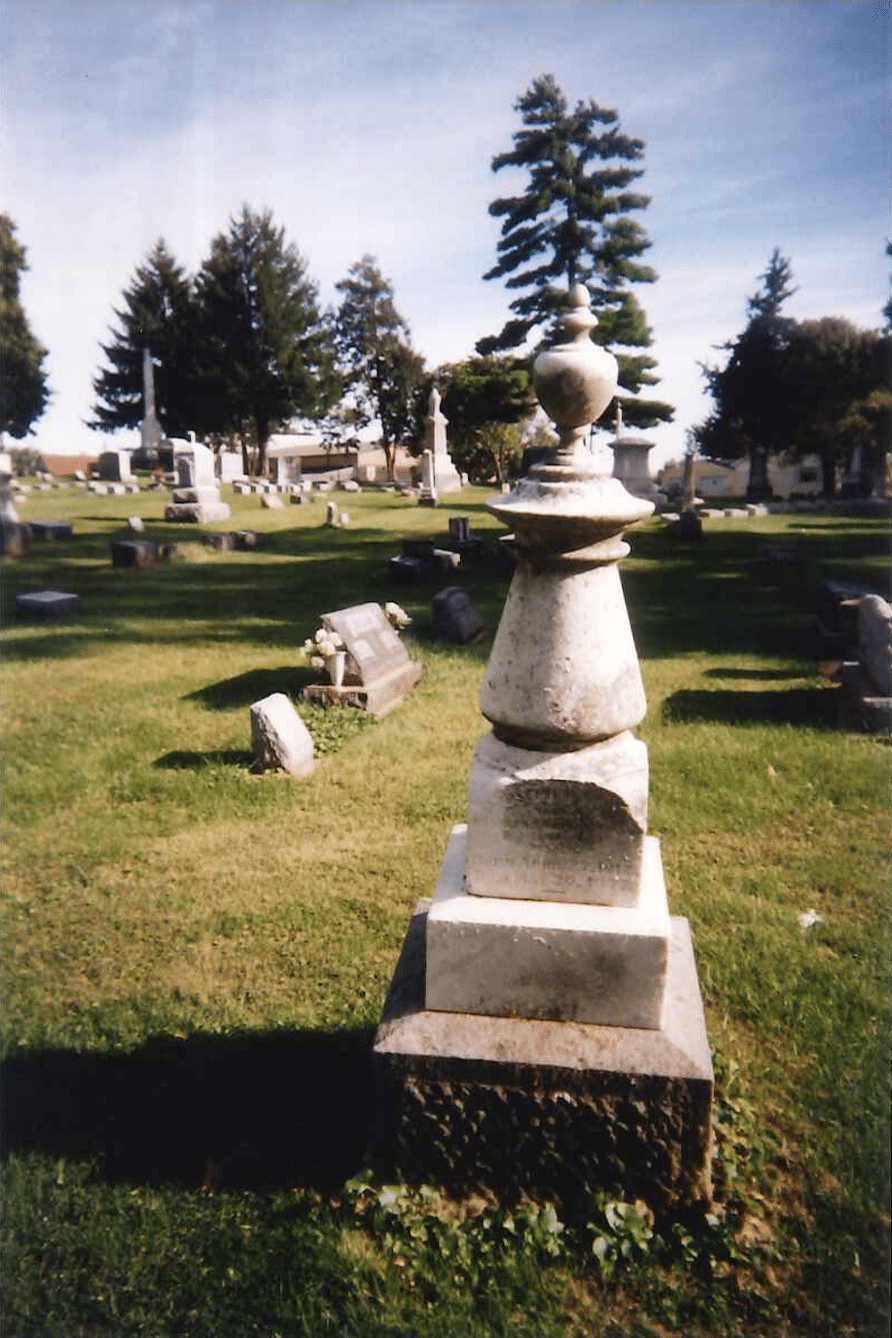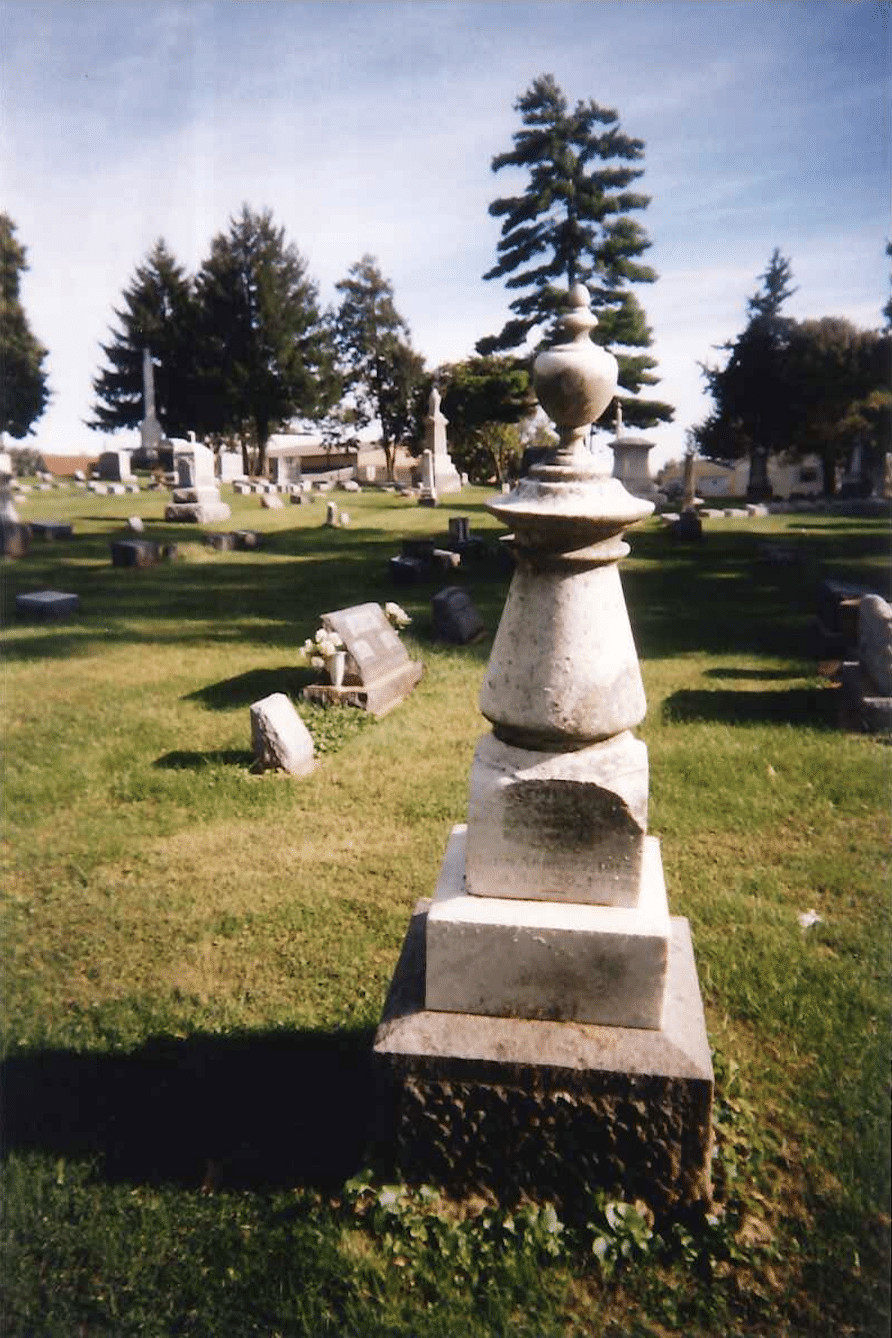The Mystery of Joseph  Morse
Morse
By: David Heighway, Hamilton County Historian
In one of the older parts of Crownland Cemetery, there is a gravestone that marks a mystery. It looks like a chess piece, but is actually a variation on a sculpture of an urn. The years have knocked it slightly askew. It belongs to Joseph Jacobs Morse, a man who carried a secret for most of his life and took it with him to the grave. He was born in 1812 in Woodstock, Connecticut, to Charles and Sophia Morse. His father and Samuel F. B. Morse, the inventor of the telegraph and Morse code, were cousins. Joseph married Elizabeth Hill (1813-?) in 1833, but other than this, we can find very few primary sources with information about him.
According to his obituary in the Noblesville Ledger, he left Connecticut in 1838. He spent several years in Kentucky along the Big Sandy River trading in furs, ginseng, honey, and other things. He was a strong abolitionist and left Kentucky rather than deal with slavery. He came to Noblesville around 1866 and set up a watch repair business. He was said to be very friendly and outgoing and popular in the local community. He was known for his story telling ability and his strong opinions.
He became very involved in a project in 1874 to create a park for the mineral spring that was on the riverbank south of where the judicial center is today. The pioneers had used the site for hunting – it made an excellent salt lick for deer. Morse claimed that the spring had restored his health after a bout of illness and sent samples to a laboratory to be analyzed. Ironically, the project stalled when his health took a turn for the worse. In 1876 he contracted erysipelas, and was in poor health afterward. He died May 30, 1877.
He had not communicated with his family in all the time since he had left Connecticut. In his June 1, 1877 obituary in the Ledger, it was mentioned that he rarely spoke about his past and the writer commented, “…it has been thought that he was the bearer of a painful secret”. They estimated the value of the estate at $5,000 to $6,000.
A September 17, 1940, Ledger article has some further details about his last days. Before he died, he had asked his friend George Vestal to contact his family. A nephew came, settled the estate for the eastern heirs, and put up the marker. However, an article found in a June 7, 1877, Chicago newspaper said that estate was worth $10,000 and had been left to “J. W. Dunflinger” and “R. G. Lucas”. There were two local men named John W. Durflinger, a carpenter, and Robert G. Lucas, a marble dealer. So, perhaps the money was to continue construction of the mineral spring park. According to Joseph Roberts, even though the spring was just south of Conner Street, it was possibly covered over when the Conner Street bridge was built in the 1930’s.
There is no mention of Morse’s wife in either of the 1877 articles. Interestingly, we haven’t found him in any of the census records between his birth and death. The man left almost no paper trail. So what was his secret?
